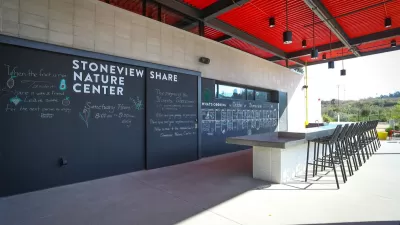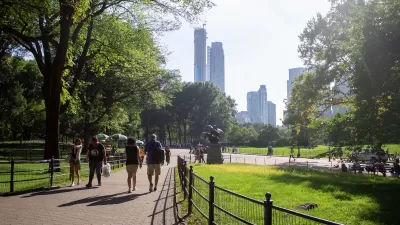City golf courses, paid for by public dollars, are rarely used by the vast majority of residents. Some advocates want to see them opened to the public as parks or repurposed for housing.

According to an article by Eliza Relman in Business Insider, “Urban and suburban golf courses are one of the least efficient and equitable ways to use densely-populated land. Many urban planners see them as a golden opportunity to address worsening homelessness, a housing affordability crisis, and a shortage of green space.”
In about half of US states, golf courses are heavily subsidized through property tax breaks. In California, a 1960 law ensures golf courses aren't taxed based on their ‘highest and best use’ as other land is, and instead get a special tax break just for being golf courses.
Compared to public parks, golf courses have much lower usage by their nature, Relman writes. In San Francisco, “The Presidio Golf Course has just 1,200 visitors per acre each year, while San Francisco's nearby Golden Gate Park welcomes 24,000 visitors per acre annually.”
With golf’s popularity on the decline—“About a third of public golf courses lost money in 2019”—“Proponents of retrofitting courses note that reducing the number of golf courses would help boost revenue for courses that do survive.”
Relman describes the challenges to converting golf courses to other uses, including the cost of buying the property and the process of rezoning to accommodate housing or other new development, which faces strong pushback in many cities. “Despite what ‘anti-golf Twitter’ says, proponents of redevelopment don't necessarily want to abolish the sport — they just want golf to take up less space in dense places.”

Alabama: Trump Terminates Settlements for Black Communities Harmed By Raw Sewage
Trump deemed the landmark civil rights agreement “illegal DEI and environmental justice policy.”

Planetizen Federal Action Tracker
A weekly monitor of how Trump’s orders and actions are impacting planners and planning in America.

The 120 Year Old Tiny Home Villages That Sheltered San Francisco’s Earthquake Refugees
More than a century ago, San Francisco mobilized to house thousands of residents displaced by the 1906 earthquake. Could their strategy offer a model for the present?

In Both Crashes and Crime, Public Transportation is Far Safer than Driving
Contrary to popular assumptions, public transportation has far lower crash and crime rates than automobile travel. For safer communities, improve and encourage transit travel.

Report: Zoning Reforms Should Complement Nashville’s Ambitious Transit Plan
Without reform, restrictive zoning codes will limit the impact of the city’s planned transit expansion and could exclude some of the residents who depend on transit the most.

Judge Orders Release of Frozen IRA, IIJA Funding
The decision is a victory for environmental groups who charged that freezing funds for critical infrastructure and disaster response programs caused “real and irreparable harm” to communities.
Urban Design for Planners 1: Software Tools
This six-course series explores essential urban design concepts using open source software and equips planners with the tools they need to participate fully in the urban design process.
Planning for Universal Design
Learn the tools for implementing Universal Design in planning regulations.
Clanton & Associates, Inc.
Jessamine County Fiscal Court
Institute for Housing and Urban Development Studies (IHS)
City of Grandview
Harvard GSD Executive Education
Toledo-Lucas County Plan Commissions
Salt Lake City
NYU Wagner Graduate School of Public Service





























